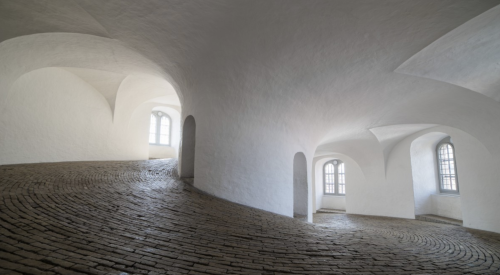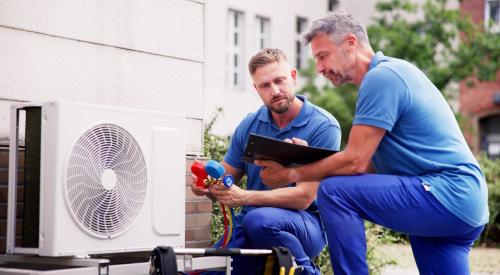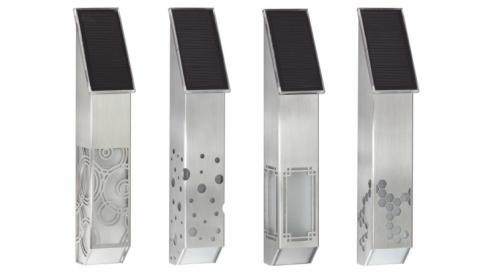"We’ve tried to apply green building principles to our entire marketplace in a production mode," says Tom Hoyt, president of McStain. From affordable starter homes to luxury condos to large custom homes, McStain has built around 350 units a year with the environment as a top priority. "We’re trying to give the public the opportunity to make a choice that is better for them and for the environment," says Hoyt.
To do this, McStain focuses on the entire green building spectrum, which starts with land planning and sustainability. Hoyt explains that sustainability starts with diversity of population and product. This helps school systems by preventing surges in certain age groups, and it provides a healthy employment profile that cuts down on the commuting commonly found in mono-demographic communities.
"A couple of our master-planned communities have provided the impetus for increased transit service to outlying areas because the population density and diversity was there," says Hoyt.
Eldon Ward, president of Cityscape Urban Design, Inc., Fort Collins, Colo., works with about a dozen builders and developers in Northern Colorado and has been working with McStain for the last three years. His company does the overall site and landscape plans for developments and he sees a difference in the way McStain operates.
"It is a treat for me to work with them. They are very design oriented and they always want to do a better development than the one they’ve done before," says Ward. "They are very concerned with the livability of their neighborhoods."
Hoyt sees this focus on planning as not only the obvious starting point, but also the bottom line in providing sustainable communities.
"We have a tremendous responsibility when we put something on the ground," says Hoyt. "We’re establishing land patterns that several generations are going to have to live with."
Efficiency Is Key
McStain Enterprises participates in the Built Green program funded by the Governor’s Office of Energy Conservation and developed by several agencies and groups led by the Home Builders Association (HBA) of Metropolitan Denver. Part of the program is a 21-step formula designed to preserve natural resources and the environment. Much of the program involves the use of recycled and engineered building products.
"Resource efficiency is a big thing with us," says Kristin Shewfelt, director of environmental programs for McStain. "We try to use as much engineered lumber products as possible because they are made from fast-growing farm trees instead of old-growth forests."
Wet-spray cellulose insulation has been another important material for McStain, not only because it is made from recycled newsprint and wood fibers, but also because it performs much better than fiberglass. Hoyt tested the effectiveness of this material in several houses and found that "it has been the most effective material for us within the building envelope."
Because cellulose insulation fills tiny nooks and crevices (such as around electrical outlets and window jambs) much better than traditional materials, a tighter envelope is created with each home. This has caused McStain to focus on what they believe to be a growing concern for many homebuyers--indoor air quality.
Hoyt explains that by focusing on the larger items first, such as recycled pop bottle carpet and no VOC (volatile organic compounds) paints, then looking at the smaller details such as adhesives and accessories, they were able to create an effective system and apply it to all their homes.
"Once you get the envelope right, then you can isolate and work out the smaller details," says Hoyt. "You can tweak the system."
Shewfelt adds that a tighter envelope allows builders to centralize HVAC units and create shorter duct runs. With less energy loss around the windows, the ducts no longer need to extend to the perimeter of every outside wall. This is allowing McStain to get away from elaborate mechanicals in their HVAC systems, cutting down on maintenance costs and making the homes more affordable.
The Learning Curve
Hoyt states that for quite some time it was difficult
to find the technical expertise necessary to design and build new and different residential energy systems.
"There are numerous mechanical engineers out there who have put their lives into designing energy systems for large commercial buildings and institutions," says Hoyt. "But on a house-by-house basis, it has been extremely difficult to get that kind of knowledge."
In the last few years however, there has been a rise in awareness and resources for builders looking for technical information. Consortiums, organizations and associations have been sprouting up around the country with the aim of helping any builder who wants to build green. In fact, McStain is currently working with the Consortium for Advanced Residential Buildings (CARB) to build three homes in order to evaluate which environmental systems offer the best performance for the least cost.
McStain has used test houses in the past with CARB and other groups, not only to discover, test and evaluate new technologies, but also to educate their labor force on these new building techniques.
"At first (several years ago), it was difficult to educate our trades and contractors. Now anyone coming in fresh just gets educated by their peers," says Hoyt.
McStain also believes that educating homebuyers is just as important as educating their own employees and the industry in general. "The burden is on the builder to educate the marketplace," says Shewfelt. "If we don’t do our part, then the buyer doesn’t perceive the value of a built-green home."
McStain Enterprises sees their building philosophy as a partnership with the natural environment, meaning they build with the knowledge that the land and natural materials are irreplaceable. Hoyt says this is also a great way for builders to differentiate themselves from much of the market and enhance their image.
"By no means does being a green builder mean you can’t be a leading-edge profitable builder," says Hoyt. "We’re a big believer in doing both."












